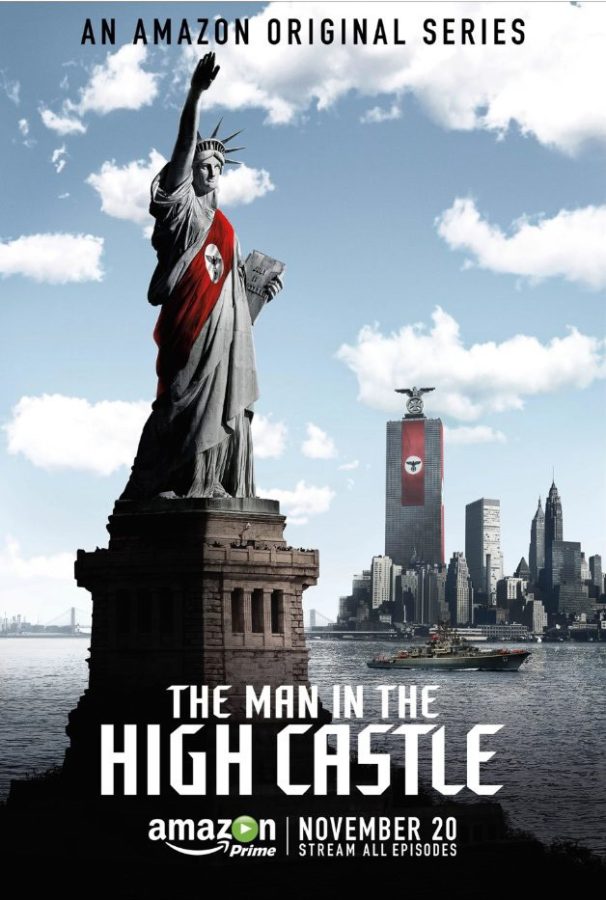Human beings are not rational creatures. Everyday, millions of people make decisions that make no sense. Why?
Ask our supreme overlord, the right brain. Right brain cracks the whip of emotion and passion. I’m not one to complain, as these make life worth living.
A good TV show fires the right brain into a frenzy, inducing eager investment in plot and characters. When it comes to the Amazon original series, “The Man in the High Castle”, left brain says “Cool!” while good old right brain can only muster a nonchalant “Meh.” The show adds up to less than the sum of its parts, as an intriguing concept fails to put forth any character or plot worth investing in.
“The Man in the High Castle” is based on the 1962 novel by Philip K. Dick that centers around the question: What if the Nazis won World War II?
Perhaps the best part of the series is its opening theme, which is both hauntingly beautiful and informative. As the lullaby-esque theme plays, the title sequence pans over a map of post-Nazi victory America separated into three sections: the German-controlled Greater Nazi Reich in the east, the Rocky Mountains constituting the Neutral Zone and the Japanese Pacific States in the west.
Subsequently, wartime footage projects over various American iconography such as Mount Rushmore and the Statue of Liberty. The theme is all that the story of “The Man in the High Castle” is not: captivating, emotional and intriguing.
The series commits the cardinal sin of telling a story devoid of compelling characters.
The pilot introduces the main characters and key figures, but fails to build attachment to these cardboard figures.
Juliana Crain (Alexa Davalos) is thrust into transporting illegal wartime footage originating from a mysterious figure known as The Man in the High Castle (queue dramatic music, that’s the name of the show). Joe Blake (Luke Kleintank) is a young member of the American resistance who also stumbles into transporting illegal wartime footage to the Neutral Zone.
Among the other main players are Juliana’s Jewish boyfriend Frank Frink (Rupert Evans), Nazi officer John Smith (Rufus Sewell) and scheming government officials Rudolph Wegener (Carsten Norgaard) and Nobusuke Tagomi (Cary-Hiroyuki Tagawa).
The show’s greatest misstep is in the lazy characterization of these folks. Joe narrowly escapes a Nazi ambush, thus beginning and ending why the audience should root for him.
Juliana is equally bland and has minimal opportunity to flesh out as a character. She has no personal autonomy, as circumstances continually guide her path rather than making her own choices.
Perhaps the only interesting characters are Wegener and Tagomi, as the show takes a bold risk in presenting a Nazi and Imperial officer to root for. If “The Man in the High Castle” took more risks such as this, the show has the potential to be great.
Rare is the story that features a setting more interesting than its plot or characters, but such is the case with “The Man in the High Castle.” Instead of wanting to watch Joe, Frank and Juliana struggle, I was far more interested in the politics of a world with an aging Adolf Hitler.
Part of that is credited to the visuals of the show. Washed out lighting and muted colors contributed to a grim, melancholy tone. At times, this tone grew tiring. Eventually it seemed as if every good guy spoke in terse whispers, while every bad guy communicated in veiled threats. Sixty minutes of this fare is far too much and the show would benefit from cutting 15 minutes of superfluous running time.
“The Man in the High Castle” has potential, but is ultimately not compelling in its first season. An intriguing conceit fails to translate into captivating characters or plot. Overall, “The Man in the High Castle” turns out to be the television embodiment of “The Tin Man” from “The Wizard of Oz”: shiny on the outside, empty on the inside.
Worth the Watch?
Yes: If alternate timeline fare is your jam, you want to watch something visually appealing and think all things newer than 1940 are overrated.
No: If compelling characters and captivating plot are a must.
Follow Alex Furrier on Twitter









